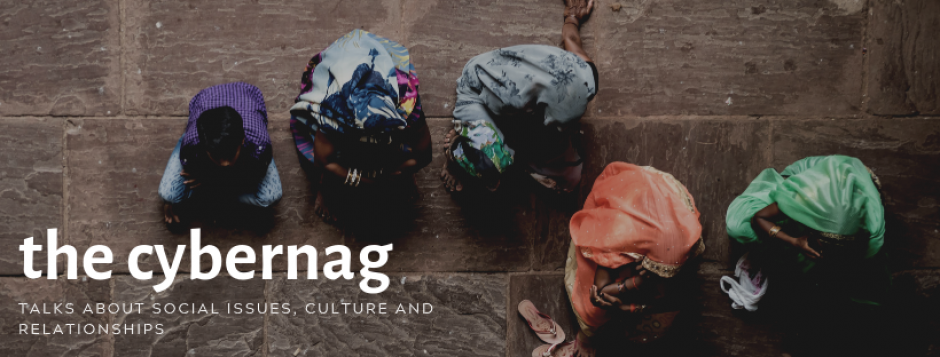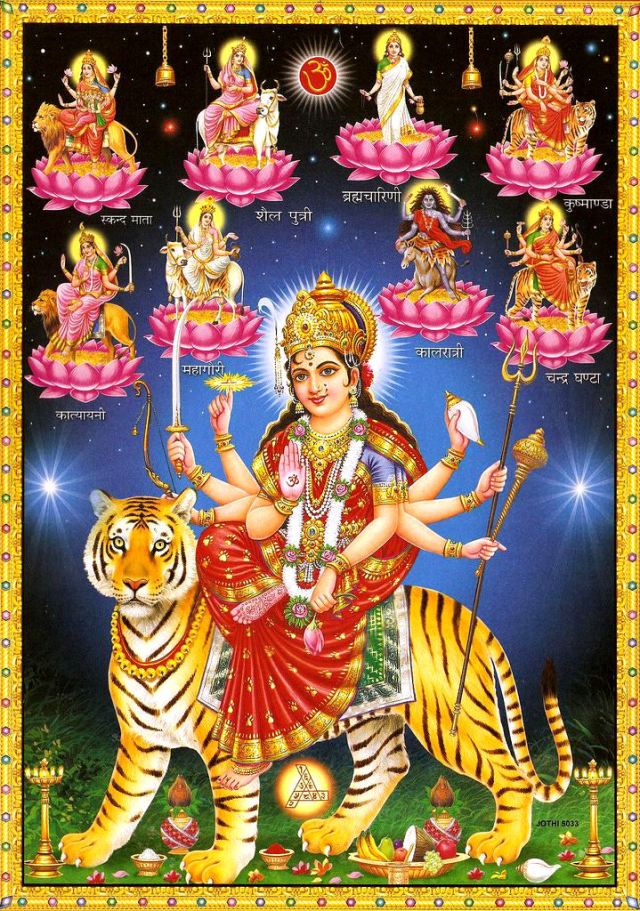We all know that Devi is worshipped in her various manifestations during Navaratri, but did you know that Navadurgas signify the conceptual life phases of Devi Parvati? Well, I didn’t till recently. But I will come to that presently.
There are four Navaratris in a year, but only the Chaitra and Sharad Navaratris are celebrated with religious and social fervor. The other two, Magha Gupta Navaratri and Ashadha Gupta Navaratri involve tantric and individualistic sadhana to propitiate Devi, which is why they are tagged with the word ‘gupta’, which means hidden.
Sharad Navaratri is being celebrated with great fervour all over the country now, and the joyous celebrations that accompany it are as diverse and colourful as the culture of each region. Read more here.
While in the south, the nine days of the festival celebrate the three Shaktis – Durga, Lakshmi and Saraswati, with three days dedicated to each manifestation of the Devi in the same order, the north Indians celebrate the nine aspects of Durga Shakti in the form of Navadurga, with each day dedicated to one form of Durga.
The order of the worship of the different aspects of Shakti during the nine days is: Shailaputri, Brahmacharini, Chandraghanta, Kushmanda, Skandamata, Katyayani, Kalaratri, Mahagouri, Siddhidaatri. The Divine Mother Parvati depicts various moods and countenances, riding a different vahana, and bestows her grace on her worshippers, even in the fiercest form of Kalaratri.
The Navadurgas are worshipped on each day of the festival in the following order:
As Shailaputri, she is the daughter of Himavan, the king of the mountains (Shail: mountain, putri: daughter). She is considered to be the mother of Nature and the purest form of Durga Shakti.
Brahmacharini is the unmarried mediating form of Goddess Parvati, who undertakes the severest penance to fulfill her wish to marry Lord Shiva. During her penance for more than thousand years, she first survived on fruits and then on dried Bilva (bel) leaves and finally gave up even leaves (Aparna). In this form of austere meditation, the Devi grants us the boon of moksha.
Chandraghanta is so named because she adorns her forehead with the moon in the shape of a bell. She is the protector, with each hand holding a weapon.
Kushmanda is that manifestation of Durga, who illumines the Universe by residing in the Sun. The purest form of energy, She is again the nemesis of all adharmic and asuric forces. She symbolizes courage and strength.
Skandamata is the mother of Lord Kartikeya, also called Skanda. She is the embodiment of motherhood, and holds Skanda on her lap.
Katyayani has a fearsome appearance, (though she is depicted as a shantaswaroopi in all pictures I could find on Google), as she is the destroyer of Mahishasura. She wields many weapons in her 18 hands.
Kalaratri, which is the fiercest form among the Navadurgas, was assumed by Devi to annihilate the asuras Shumbha and Nishumbha. Lest Her fierce form inspires fear in devotees, Her right hand is raised in abhayamudra, offering protection to them. This is why she is also known as Shubhamkari, which means one who does good.
Mahagouri means extremely white, referring to her luminous complexion. She wears white, rides a bullock and like Lord Shiva holds the trishul and damaru (hand-held drum) in her hands, while offering abhaya to her devotees. Worshipping Durga as Mahagouri liberates one from the paap-karmas of the past, present and future.
Siddhidaatri is worshipped on the ninth day of Navaratri. She grants siddhis (supernatural powers) to her worshippers, who include devas, asuras, yakshas and humans. As Siddhidaatri, Durga holds the Sudarshana Chakra, and a shankha, both of which Sri Mahavishnu holds.
We worship Durga in her many forms in the above order, but I found this interesting link that explains the Navadurga forms as the conceptual life phases of Devi Parvati. In this progression, Siddhidaatri is the first form of the Devi Parvati, considered to be Supreme among all Shaktis and is the conceptual life phase of Shakti:
• Siddhidaatri
• Kushmanda
• Brahmacharini
• Shailaputri
• Mahagouri
• Chandraghanta
• Skandamata
• Katyayani
• Kalaratri
It is believed that at the beginning of Srishti (creation), Rudra worshipped the formless Adi Parashakti to create the Universe, and She appeared from the left part of Rudra as Siddhidatri. After assuming a form, Devi went to live inside the Sun, to help him disseminate light and energy to a dark and cold Universe, to be called Kushmanda. After that, She incarnated as Sati, the daughter of Daksha Prajapati. The unmarried form of Devi in that life is worshipped as Brahmacharini, when She does austere penance to wed Shiva. We all know the story of Sati and how she gave up her body in the yagna kund, when her husband was insulted by Daksha.
After that, Parvati was born to Himavan, the King of the Himalayas, and was called Shailaputri. When she became a young woman, she had the most glowing complexion (Gauri) and so was called Mahagouri. Once she was married to Shiva, she began adorning her forehead with the half-moon in the shape of a bell and so came to be called Chandraghanta. Devi Parvati became Skandamata once she gave birth to Lord Skanda (Kartikeya).
After all these benign aspects, She took the form of Katyayani to destroy Mahishasura. When she discarded her outer skin before annihilating the asuras Shumbha and Nishumbha, she was revered as Kalaratri, which is the most fearsome form of Parvati.
There are so many strands of our puranas that we can find different interpretations of the manifestations and forms of our Devis and Devatas, especially Shiva and Shakti, each one a spiritual treasure to delve into.
Om Shakti! Jai Mata Di!
You can find the Navadurga stotram here.
Images: This page: TemplePurohit Homepage: hindutva.info







Intresting and informative post.
LikeLike
What an informative post!
In many parts of Maharashtra, the last four days of Navratri are celebrated as Shardotsav. Dedicated to the goddess of learning, Goddess Sharada.
LikeLike
Manju! Where have you been? It is so good to see you here!
We celebrate Navami as Saraswati puja, when we worship our books, tools and instruments, including musical instruments. We are not supposed to read, write or do any work with those implements on that day. It used to be fun for many, but I remember fretting about not being able to read 🙂 Now, of course, this custom has been modified to include not reading from only those books which we have kept in the puja. Plus, there is no holiday in schools either.
LikeLike
Intresting and informative post.
LikeLike